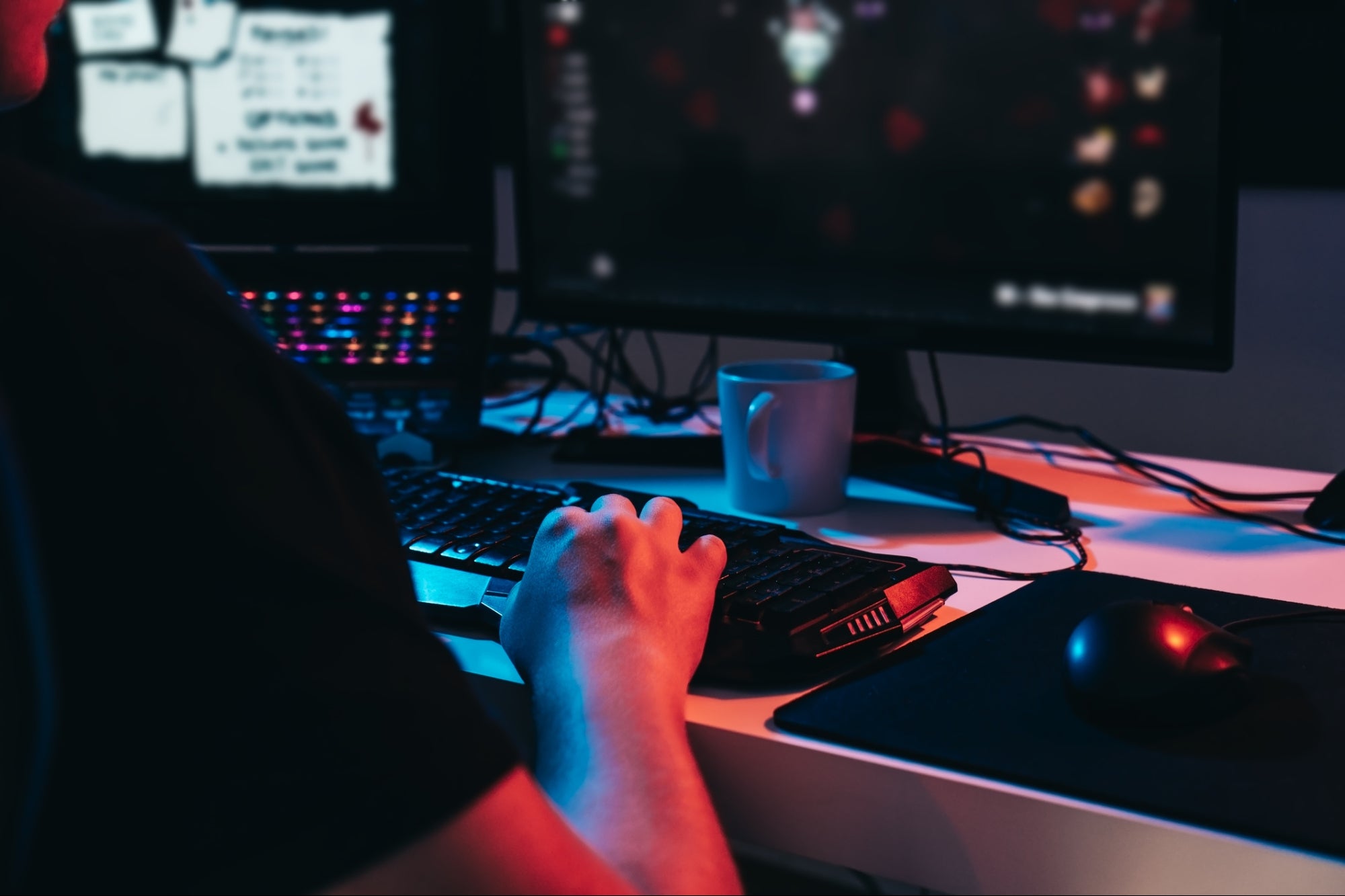Signing out of account, Standby…
NFTs have revolutionized the gaming industry, presenting a unique opportunity for game developers to build their own NFT marketplace. But what should they consider before taking the plunge?
The non-fungible token (NFT) space has grown exponentially over the last year or two — moving into public awareness, which has led to widespread mainstream adoption. Assets that were thought of as fringe tokens at best have seemingly become a cornerstone of the digital economy, selling for huge numbers and getting the endorsement of major celebrities worldwide.
The revolution we’ve seen with NFTs has truly been a marvel. NFTs have been adopted even faster than cryptocurrencies were — standing on the back of cryptocurrency technology to become what they are today. Now that these tokens are a global phenomenon, everyone’s looking to create them to share a passion or as a monetization incentive.
Related: 3 Ways Entrepreneurs Can Expand Their Financial Portfolio Using NFTs
As we’ve now seen, NFTs have also infiltrated the gaming space. Following the success of Axie Infinity, Decentraland, and other platforms, game developers can see that NFTs provide a great way to make money and monetize the hype surrounding their games. And as expected, many of them have jumped on the train and are now using NFTs on their gaming platforms.
Results have been mixed, with some developers seeing impressive success while others have been relative duds. In all the lessons learned, one thing remains the same — before you build out NFT features, you must have a reliable and attractive platform that draws people in. Let’s discuss how NFTs have revolutionized the gaming industry and
whether building a native NFT gaming marketplace is necessarily the right move.
Related: 3 Ways NFT Gaming Is Building New Wealth Opportunities
NFT gaming is one of the fastest-growing subsections of the entire NFT space. The sales of these assets have risen significantly and are expected to be in the billion-dollar region by 2025.
The appeal of NFTs in gaming is quite apparent: The play-to-earn model has entirely swept the landscape, rewarding players with gameplay and financial incentives. The play-to-earn model has made gaming essentially more attractive to players. Now it is possible to earn money while playing your favorite games.
With NFTs, players can easily own assets in these games and trade them for fiat money. The model is much better than traditional games, which held assets only on the platforms, where players could trade them for digital coins that held no fiat value.
Related: 4 Retention Lessons For a Successful Monetization Strategy
Take, for example, Axie Infinity. Players battle with Axies — or rather, digital pets — that they grow and breed. The rules are simple: When you beat someone else’s Axie, it belongs to you. Every Axie is an NFT, and you can sell it for fiat currency on the Axie marketplace.
The latter marks a shift in how most NFT creators traditionally sell their tokens: on regular NFT marketplaces. Of course, this isn’t to say that regular marketplaces have become less attractive. With cross-chain support coming to marketplaces like myNFT, the landscape for NFT marketplaces is also growing.
But, despite the growth of earning opportunities, NFTs also provide additional benefits for gaming enthusiasts. Some of them include:
Related: How NFTs Drive Brand Engagement and Opportunity
Right now, there is no denying that NFTs will be a huge part of the future of gaming. And, if you’re an up-and-coming developer, being able to plug into this will go a long way in helping you achieve optimal growth.
However, there is one key question you need to keep in mind: Do you build an NFT marketplace or not?
Having a custom NFT marketplace allows you to own all of your game’s assets, making it even more compelling for your players to stay within the game. One of the biggest reasons why Axie Infinity became so popular was that it managed to build an economy with its NFTs. Using the Axie marketplace, players directly sell their Axies and other digital collectibles — all without having to leave the game.
As a game developer, you also have the option to build a marketplace directly, which allows players to buy and sell their in-game NFTs. That said, you should also consider the risks. Unless your platform has reached an inflection point where it is attracting users, this might not be a prudent decision.
Related: How to Become a Successful Gaming Entrepreneur
Today, we have an incredible number of NFT marketplaces available. With the industry still fragmented, many of these marketplaces are built on specific blockchains — essentially limiting their access to NFTs on other chains. However, forward-thinking developers can also build on myNFT — an all-inclusive, multi-chain NFT marketplace that supports tokens on multiple blockchains and introduces an interesting new auction mechanism to the industry known as GBM.
As a game developer, building on these existing marketplaces offers many benefits. For one, they provide low-cost alternatives to owning your marketplace outright. You don’t have to pay so much to maintain a marketplace, and the only costs you’ll have to consider will be keeping your tokens listed.
At the same time, you should remember that having an in-house NFT marketplace only puts more pressure on you to ensure liquidity. People want to come to your marketplace, sell their tokens, and get paid as quickly as possible. As an early-stage gaming platform, this might not be possible for you at the moment. However, leveraging the liquidity on these established marketplaces helps you achieve better financial viability, thus increasing the attraction of your game even more.
So, you might want to wait until your platform reaches peak velocity and has built out a considerable user base before introducing a native NFT marketplace.
A 115-Year-Old Startup? The Leaders of This Family Business Are Honoring the Past and Building for the Future.
Turn Your Managers Into Your Biggest Asset for Winning the Great Resignation
‘It Was Like a Drug’: How Dave’s Hot Chicken Grew a Cult Following in an East Hollywood Parking Lot
This Goldman Sachs Alum Launched an App That’s Helping Young People Manage Their Finances and Healthcare (And She’s Raising Millions of Dollars to Do It)
One of America’s Richest Women Took Zero Outside Investors. Here’s How Aviator Nation Founder Paige Mycoskie Did It.
4 Expert-Backed Strategies for Improving Your Communication Skills
This Couple Escaped Arranged Marriages in Pakistan. Now They Run a $14 Million Brooklyn Shoe Brand.
Yan Katcharovski
Jonathan Martinez
Julia Wilkinson
Subscribe to our Newsletter
The latest news, articles, and resources sent to your inbox.
I understand that the data I am submitting will be used to provide me with the above-described products and/or services and communications in connection therewith.
Read our privacy policy for more information.
Copyright © 2022 Entrepreneur Media, Inc. All rights reserved.
Entrepreneur® and its related marks are registered trademarks of Entrepreneur Media Inc.
Successfully copied link


